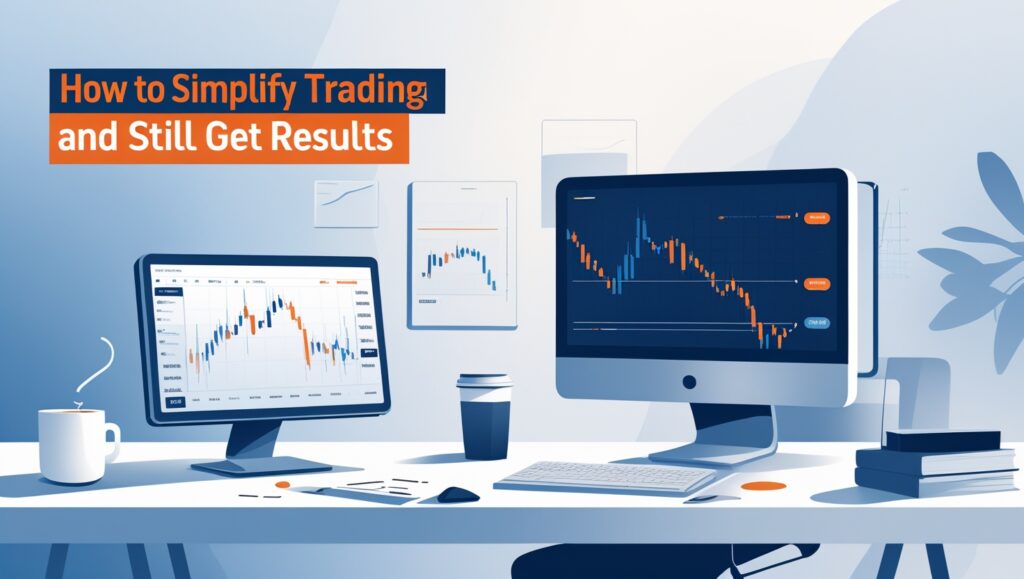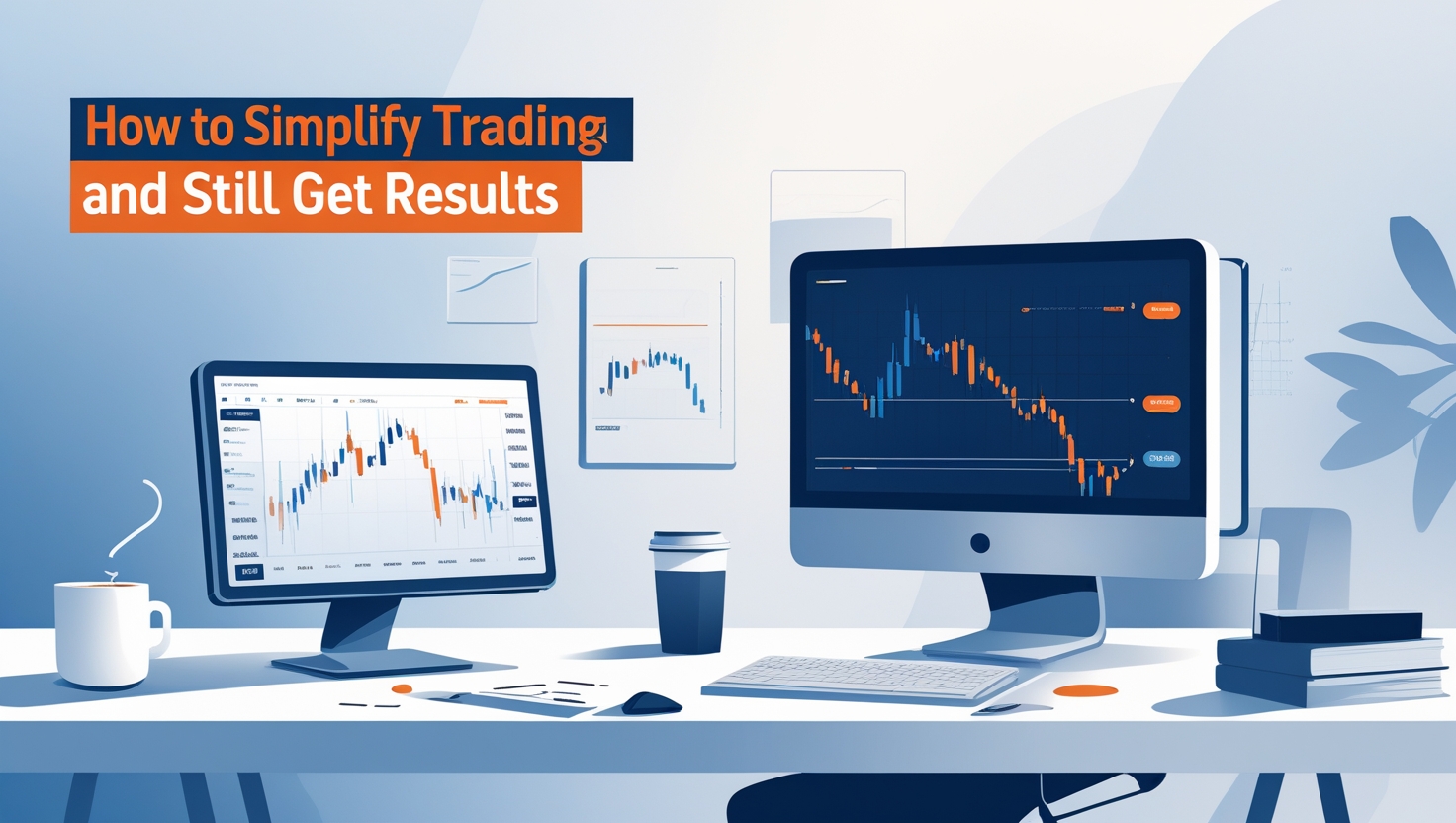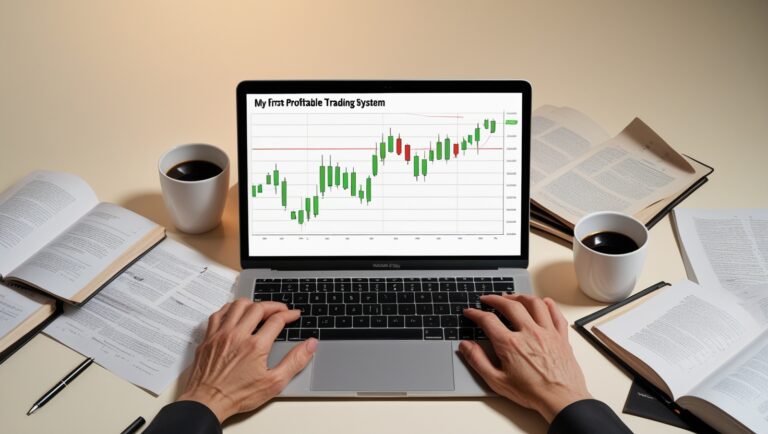How to Simplify Trading and Still Get Results
How to Simplify Trading and Still Get Results
When I started trading, I thought I needed ten screens, ten indicators, and ten hours a day. I was overwhelmed, overcomplicating everything, and still losing money. But once I stripped it all down and simplified my process, that’s when the results came in — and they’ve been consistent ever since.

Table of Contents
Complexity Doesn’t Equal Profit
A lot of people think the more tools you have, the better trader you’ll be. But in my experience, complexity leads to confusion. What helped me was eliminating all the noise and focusing only on what matters: clean setups, price action, and timing.
I Only Trade a Few Stocks
I don’t scan 100 tickers every morning. I’ve found that watching a small group of stocks daily makes me more in tune with how they move. I know what volume looks like, what fakeouts feel like, and how they behave near key levels.
I Don’t Use Indicators
I get this question a lot — “What indicators do you use?” The answer: none. I explain the full strategy I use inside my ebook, and it’s based on clean charts, price behavior, and timing — not lagging tools.
My Setup Is Simple
I trade from a laptop. No $3,000 computer setup. No multiple monitors. I keep it basic because what really matters is decision-making and mindset, not tech. The cleaner your environment, the cleaner your thinking.
I Trade Less, Not More
I used to think I had to trade every day. Now? I only trade when the setup is clear and strong. I’d rather take one quality trade than ten random ones. That change alone improved my win rate and reduced stress.
I Trust My Watchlist
Each morning, I look for a few stocks with volume and clean structure. I build a simple watchlist and let the market come to me. No chasing. No alerts. Just patience and preparation.
I Focus on Risk First
Every trade starts with one question: how much am I willing to lose? I keep my risk small. I don’t size up just to make money faster. This mindset has helped me stay in the game long enough to actually become consistent.
I Have a Repeatable Process
What works for me now is a step-by-step system I can do every day. That’s why I created my ebook — to help others build a trading routine that works without overcomplicating it. If you’re tired of jumping from one strategy to another, this is for you.
Results Come from Discipline, Not Magic
Most people are looking for the perfect stock or the secret indicator. But what really works is showing up, sticking to a simple plan, and managing risk like a pro. You don’t need more — you need less, done better.
I’m Not Attached to Trades
Simplifying my trading also simplified my emotions. I don’t marry trades anymore. If it doesn’t work, I cut it and move on. No hesitation. No revenge trading. That kind of emotional control came from building a plan I trust.
I Use Tools That Make My Life Easier
While I don’t rely on indicators, I do use free tools and screeners to filter potential movers. But I keep it lean — just enough to spot momentum, not enough to cloud my judgment. I share my favorite ones inside the ebook as well.
Anyone Can Do This
You don’t need to be a math genius or sit at a desk all day to make this work. I simplified my strategy so I could live a life, not live on charts. And if I can do that — starting with a small account and no expensive courses — so can you.
One thing I learned early on is that trading should fit your lifestyle, not control it. I used to wake up stressed, trying to beat the market. Now I take my time, follow my plan, and trade when it makes sense. Simplifying my approach gave me more peace and more profit.
I also stopped listening to every opinion online. Twitter, Discord groups, random YouTubers — it’s easy to drown in noise. Once I started trusting my own process, I made better decisions. You can’t build confidence if you’re always chasing someone else’s calls.
Another shift was removing FOMO from my trading. If a stock runs without me, that’s fine. I let it go. My focus is on clean setups with controlled risk — not gambling. Missing a move is always better than forcing a bad one.
I began treating trading like a real job. I clock in, I do my prep, I follow my checklist, and I clock out. That structure gave me clarity. It’s not about passion or luck — it’s about consistency and execution.
Keeping a trade journal helped me refine my system. Every win, every loss — I wrote it down. I started to notice patterns: which setups worked, which didn’t, what times I traded best. If you want to grow, you have to track your behavior.
I also learned that less screen time means fewer mistakes. When you stare at charts all day, you start seeing trades that aren’t really there. Now I step away once my plan is set. I only come back when it’s time to execute.
One of the biggest improvements came when I stopped chasing perfection. No strategy is perfect. Not every trade will work. But that’s okay — because the edge comes from sticking to a plan, not being right all the time.
I built rules around when to trade and when to skip the day completely. If the market is choppy or unclear, I sit out. That discipline alone has saved me more money than any setup ever made me.
Simplifying also meant reducing how many positions I hold. I trade one or two stocks at a time. That way I can manage each one properly. No more juggling five plays and losing track of risk.
The fewer moving parts I have, the better I perform. That’s why I don’t over-customize my charts. Just candles, volume, and levels. Clean, simple, and easy to read — exactly how trading should feel.
I didn’t get here overnight. It took time, trial and error, and a lot of losses. But once I committed to simplifying and building a repeatable system, everything changed. You don’t need to know everything — you just need a process you can trust.
And if you’re ready to stop guessing and start trading with purpose, check out my ebook. It breaks down my exact process — how I prep, pick stocks, and manage risk. It’s the same system that helped me go from overwhelmed to consistent.

Stay ahead in the stock market! Subscribe to our newsletter and receive exclusive stock flow reports, trading insights, and actionable tips directly in your inbox. Join thousands of traders who get our updates first.







